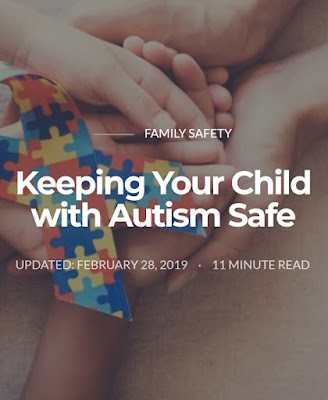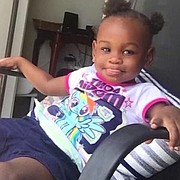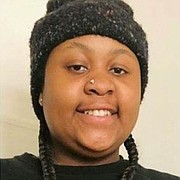A recent study by the American Journal of Public Health examined national mortality data and found that individuals with a diagnosis of autism died on average 35.8 years younger than individuals in the general population. Their research also found that the difference in deaths caused by injury was almost as striking.
Most parents place their children’s safety as a top priority as a rule. But for parents of children with autism, the reality is that it can be even more difficult to keep your children safe from themselves and others simply because of the nature of their disorder. However, parents of children with autism should not live in constant fear: there are tips parents and caregivers of kids with autism can follow to make sure they stay safe.
Characteristics of Autism
Image via Autism Society
People with ASDs (autism spectrum disorders) share some symptoms, such as difficulty with social interaction, and their brains process information differently than those of unaffected people. Children with ASDs may exhibit a common set of characteristics that naturally make them more susceptible to danger. For instance, people with ASDs commonly have no real fear of dangers and an apparent insensitivity to pain. An inappropriate response—or no response at all—to sound is another common characteristic that could open the door to danger.
Scientists do not yet know the cause of ASDs. According to the CDC, ASDs occur in people of all racial, ethnic, and socioeconomic backgrounds. While it is estimated that autism affects 1 in 88 children, boys are nearly five times more likely than girls to be affected by autism; in fact, the number of boys affected by autism is 1 in 54, compared to 1 in 252 girls. And, Autism Speaks points out that the prevalence of autism is not just growing: it is “the fastest-growing serious developmental disability in the United States.”
Image via Autism Speaks
Keeping all children safe is important. But, keeping children with autism safe becomes even more of a priority because of their social, communication, and behavioral challenges.
5 Tips for Creating a Safety Plan
Autism Speaks recommends that parents of children with autism create safety plans, and there are some basic tips to keep in mind when creating those plans for your child with autism.
1) Include family and community members who come into daily contact with your child with autism. Keep in mind school personnel, daycare providers, neighbors, extended family, etc. Make sure you have contacted each person and discussed your most pressing concerns about your child’s safety.
2) Think about all of the places in which your child needs to be protected. This probably includes home, school, friends’ homes, community centers, etc. Then, be sure to evaluate them for safety and to put preventative measures into place in each area. It is especially important to remember to include safety skills in your child’s Individual Education Program (IEP) in your school district.
3) Consider the top safety risks for individuals with autism: wandering, pica (the tendency to eat or crave substances other than normal food), drowning, and household toxins. Take the necessary precautions for safeguarding your child against these safety risks and practice safety skills with your child other family members.
4) Give your child a form of identification with contact names and numbers listed. Make sure your child always wears or carries this identification, especially because wandering could be a concern. Or, purchase a child locator and clip it to your child’s shoe, belt, etc.
5) Contact your local communications center, police department, and/or 911 call center to communicate your concerns and safety plan with the appropriate officials. Remember, you are your child’s best safety advocate.
Image via GDS Infographics
Safety at Home
The home can be a very dangerous place for any young child, but it can be even more dangerous for your child with autism. The difference is that the safety measures and precautions most parents implement for very young children may need to be in place for a much longer period of time for children with autism. Consider this checklist to keep your child with autism safe at home
- Furniture – Secure especially top-heavy furniture to the wall with furniture brackets or safety straps. Don’t forget that some electronics also may be heavy or easily pulled over by your child, so use items such as TV safety straps.
- Cleaning products – All cleaning products should be locked in a safe location. You may want to put them in a locked area in the garage or basement, so they are not in the main living space of your home.
- Freezers – If you own a chest-style freezer, keep it locked at all times. Storing the key in a safe place where your child cannot access it is a good idea.
- Doors – Key locks may be enough for some children affected by autism, but you may want to use door alarms to prevent your child from leaving your home without your knowledge. Again, remember to keep your keys in a place out of your child’s reach. If your child has been known to wander (see the section on wandering below), you should use a child locator. There are several types available, especially online, but any you choose would help ease your mind about your wandering child.
- Visitors – As with any child, you should teach your child with autism the safety rules about opening the door to visitors, especially if he is home alone. The old safety rule of not opening the door to anyone when home alone is especially important for an child with autism who has a severe language or speech delay or who is completely nonverbal. One way to communicate this rule to your child with autism is to create a social storybook with pictures to help explain the rules.
- Hot water – Sometimes children with autism struggle with sensory challenges, so they may be more at risk for getting burned by hot water simply because they cannot feel hot and cold. One simple solution is to turn down the temperature on your hot water heater. If you have an older child with autism, you may want to practice turning on the hot water with the cold water. You may even put stickers on the hot water knob to remind your child that it is a potential danger to him. Don’t forget to do this in the shower as well as on your sink faucets.
https://www.safety.com/autism-safety






















